- Why Prune Tomato Leaves?
- Promote Air Circulation
- Reduce Disease Risk
- Increase Sunlight Exposure
- When to Prune Tomato Leaves
- Early Growth Stage
- Mid-Growth Stage
- Flowering and Fruit Development Stage
- Late Season
- Early Morning or Late Evening
- Early Morning
- Late Evening
- Before Flowering Stage
- How Many Tomato Leaves to Remove?
- Tomato Plant Type
- Plant Size and Vigor
- Disease and Pest Pressure
- Fruit Ripening
- Remove Excess Leaves
- When to Remove Leaves
- How Many Leaves to Remove
- How to Remove Leaves
- Conclusion
- Keep Some Leaves Intact
- “Question-Answer”
- Why should I prune tomato leaves?
- When is the best time to prune tomato leaves?
- How many tomato leaves should I remove when pruning?
- Can pruning tomato leaves help increase fruit production?
- Will pruning tomato leaves affect the taste of the tomatoes?
- Can I prune tomato leaves throughout the growing season?
- “Video” Don’t Make This CRITICAL Mistake Growing Tomatoes!
Pruning tomato plants can greatly improve their overall health and yield. While it may seem counterintuitive to cut off leafy growth, removing certain leaves can actually benefit the plant in several ways. So, why should you consider pruning your tomato plants?
First and foremost, pruning helps improve air circulation and sunlight penetration to the lower parts of the plant. This reduces the risk of fungal diseases like blight and allows the lower leaves to receive the necessary sunlight for photosynthesis. By removing excessive foliage, you are creating a more favorable environment for your tomato plants to thrive.
Additionally, pruning can help redirect the plant’s energy towards fruit production. By removing some of the leaves, you are channeling more nutrients towards developing bigger and juicier tomatoes. This can result in higher yields and tastier fruits.
However, it’s important to know how many leaves to remove when pruning tomato plants. As a general rule of thumb, it’s recommended to remove the leaves that are touching the ground or blocking sunlight from reaching the lower parts of the plant. You should also remove any yellowing, diseased, or damaged leaves to prevent the spread of pathogens.
Remember to use clean and sharp pruners or scissors to minimize the risk of transmitting diseases. Take care not to over prune as this can stress the plant. Pruning should be done regularly throughout the growing season to ensure continued health and productivity of your tomato plants.
Why Prune Tomato Leaves?
Pruning tomato leaves is an important practice that can help promote healthier, more productive plants. Here are several reasons why it’s beneficial to prune tomato leaves:
- Improved air circulation: Pruning helps create better airflow between the tomato plants, reducing the risk of diseases such as blight and fungus. When leaves are overly dense, they can trap moisture and promote the growth of harmful pathogens.
- Enhanced light penetration: By removing some of the lower leaves, you can allow more sunlight to reach the lower parts of the plant. This is particularly important for determinate tomato varieties that tend to grow in a bush-like fashion. Increased light can improve fruit ripening and overall plant productivity.
- Reduced competition: Tomato plants naturally produce more leaves than necessary. By selectively removing excess foliage, you can redirect the plant’s energy towards fruit production rather than leaf growth. Pruning can help with thinning out the plant, allowing for better nutrient uptake and directing resources towards developing bigger, sweeter tomatoes.
- Easier maintenance: Pruning tomato leaves can make it easier to access the plant for watering, mulching, and pest control. The removal of certain leaves can also make it easier to identify and address issues such as yellowing or diseased foliage.
While pruning can be beneficial for tomato plants, it’s important to be cautious and not overdo it. Removing too many leaves can expose the tomatoes to excessive sunburn and can reduce the plant’s ability to produce sugars through photosynthesis. It’s recommended to remove only the lower leaves that are touching the ground or showing signs of disease.
Promote Air Circulation
Pruning tomato leaves is not only important for maintaining plant health and preventing diseases, but it also plays a crucial role in promoting air circulation around the plant.
When tomato plants are left unpruned, they can become dense and bushy, with leaves that overlap each other. This dense foliage hampers airflow, creating a conducive environment for fungal diseases such as blight and powdery mildew to thrive.
By removing excess leaves, you can improve air circulation and reduce the risk of diseases. Pruning allows sunlight to reach the inner parts of the plant, which promotes drying and prevents the formation of moisture-loving diseases.
When pruning, focus on removing leaves that are touching the ground or excessively dense areas. These are the areas where moisture is more likely to accumulate and diseases are more likely to flourish.
Additionally, pruning can also help in reducing the spread of diseases. If you notice any signs of disease on a particular leaf or stem, promptly remove it to prevent further infection. This practice is particularly important in preventing the spread of diseases like early blight and late blight, which can quickly devastate an entire tomato crop if left unchecked.
Remember to use clean and sharp pruners or scissors to avoid damaging the plant. It is also advisable to clean your tools with a disinfectant before moving on to the next plant to prevent the spread of diseases between plants.
Reduce Disease Risk
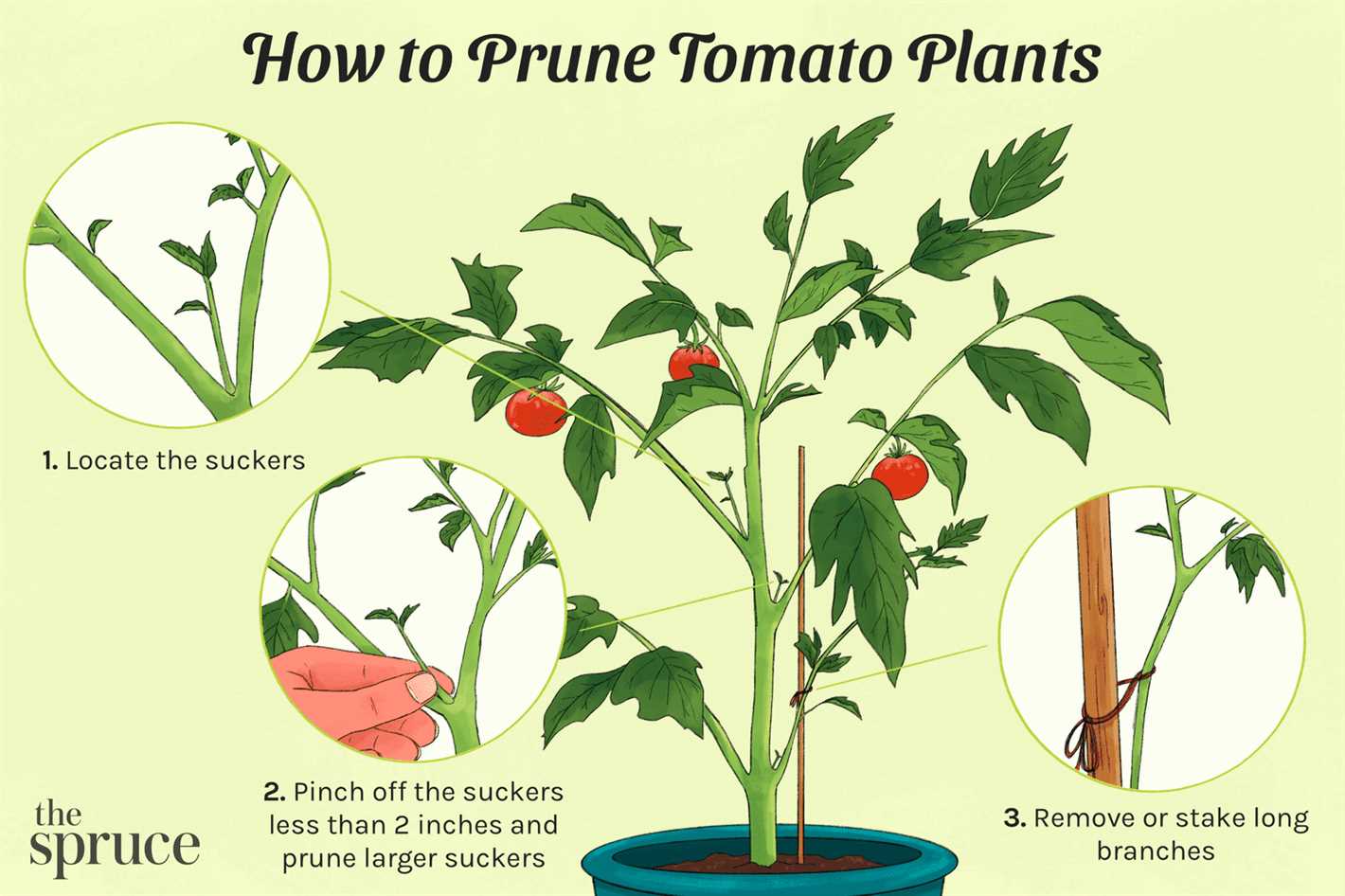
Properly pruning tomato leaves can help to reduce the risk of disease in your plants. When you remove the lower leaves that may be infected or dead, you can prevent the spread of diseases such as blight or leaf spot.
When tomato plants are overcrowded with foliage, this can create a humid and damp environment that is ideal for fungal growth. Pruning helps to increase airflow and sunlight penetration, which can reduce the moisture levels and create a less favorable environment for disease-causing pathogens.
By removing the excess leaves, you also eliminate potential hiding places for pests, such as aphids or spider mites, which can further contribute to disease development. Removing these leaves can improve the overall health of your plants and make them more resistant to various diseases.
However, it is important to avoid over-pruning, as this can also expose tomato fruits to the harsh sunlight or extreme temperatures. You should aim to strike a balance between maintaining a healthy amount of foliage to support photosynthesis and airflow and reducing the risk of disease.
Regularly inspect your tomato plants for any signs of disease or infection, such as yellowing or spotted leaves, wilting, or discoloration. If you notice any issues, promptly remove the affected leaves and dispose of them properly to prevent the spread of disease.
| Benefits | Explanation |
|---|---|
| Reduces fungal growth | Increasing airflow and sunlight can create a less favorable environment for fungi that cause diseases like blight or leaf spot. |
| Prevents pest infestations | Removing excess leaves eliminates hiding places for pests, which can contribute to disease development. |
| Improves overall plant health | Pruning helps to maintain a balance between foliage and fruit exposure, resulting in healthier and more disease-resistant plants. |
Increase Sunlight Exposure
Pruning tomato leaves not only helps in maintaining the plant’s overall health and appearance, but it also plays a crucial role in increasing sunlight exposure to the tomato fruits. By removing unnecessary foliage, you can ensure that the tomatoes receive adequate sunlight, which is essential for their proper growth and ripening.
When the tomato plant is overcrowded with leaves, it can block sunlight from reaching the lower parts of the plant, including the developing fruits. This lack of sunlight can hinder the fruit’s ability to photosynthesize and ultimately affect their quality and taste. By selectively removing some of the leaves, you can allow more sunlight to reach the fruits, resulting in enhanced flavors and improved ripening.
It is important to note that not all leaves need to be pruned. The goal is to strike a balance between foliage and fruit production. Removing all the leaves can stress the plant and reduce its ability to produce energy through photosynthesis. Therefore, it is recommended to prune selectively and focus on removing the lower leaves that are touching the ground or blocking excessive sunlight from reaching the fruits. This will create a better airflow and help reduce the risk of fungal diseases.
Pruning tomato plants should be done carefully and sparingly, especially during hot and sunny days. Always ensure that you do not remove more than one-third of the foliage in a single pruning session. This gradual approach allows the plant to adjust to the changes and minimizes stress.
Here are some tips to increase sunlight exposure through pruning:
- Start by identifying the lower branches and leaves that are touching the ground or are shaded by the upper canopy.
- Use clean and sharp pruning shears or scissors to make clean cuts on the stems. Avoid tearing or damaging the plant.
- Remove only the necessary leaves and branches, focusing on improving airflow and sunlight penetration.
- Consider removing any suckers that are diverting energy from the main stem and fruit production.
- Regularly monitor the plant’s growth and adjust your pruning strategy accordingly.
By increasing the sunlight exposure to your tomato plants, you can ensure healthier and more productive plants. Remember to approach pruning with care and moderation to maintain a good balance between foliage and fruit growth.
When to Prune Tomato Leaves
Pruning tomato leaves is an important part of maintaining healthy and productive plants. Knowing when to prune is crucial in order to avoid harming the plant and maximizing its potential yield.
Early Growth Stage
During the early growth stage, when tomato plants are just establishing themselves, it is generally recommended to avoid any major pruning. At this stage, the leaves play a vital role in absorbing sunlight and providing energy for the plant’s growth.
Mid-Growth Stage
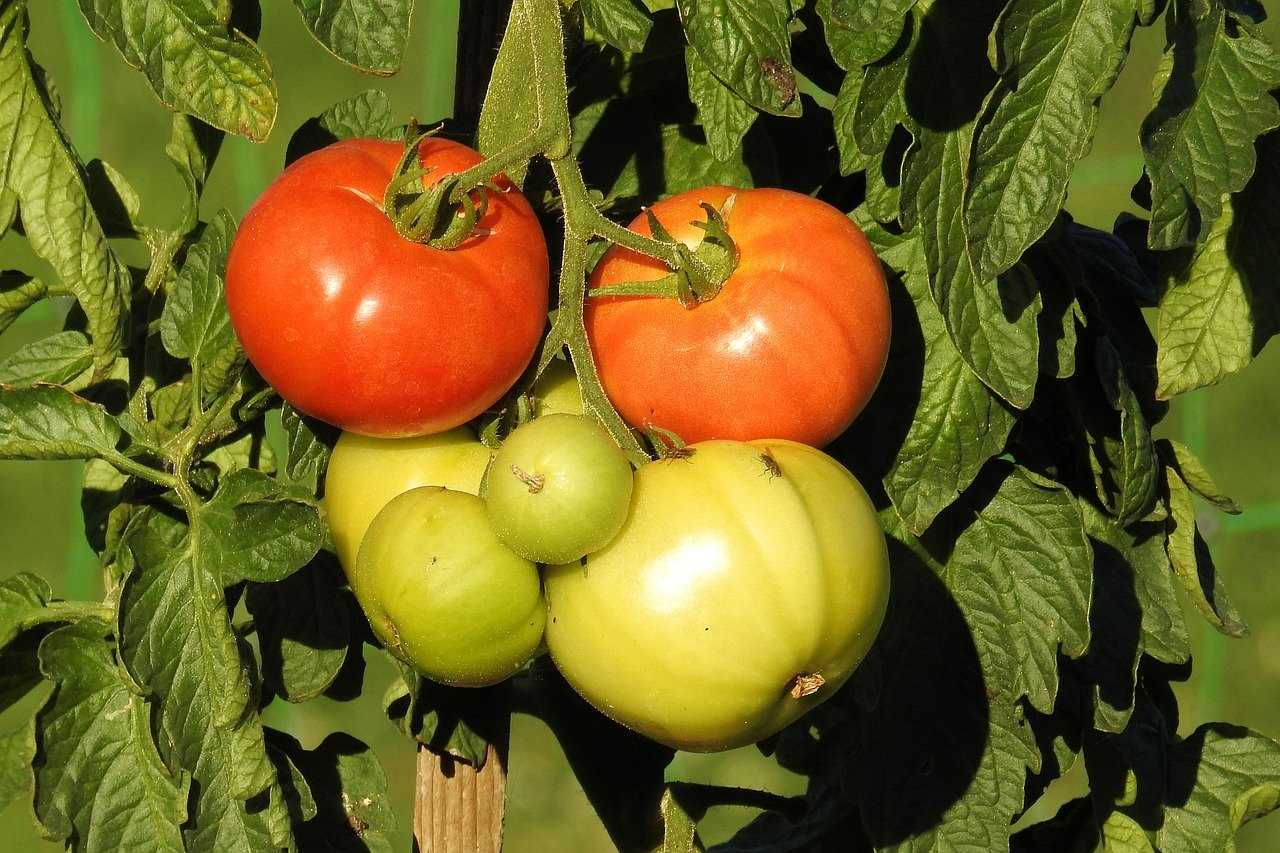
As tomato plants reach the mid-growth stage, they become more robust and develop a jungle of leaves. It is during this stage that selective leaf pruning can be beneficial. Removing a few of the lower leaves can improve air circulation and reduce the risk of diseases, such as fungal infections.
Flowering and Fruit Development Stage
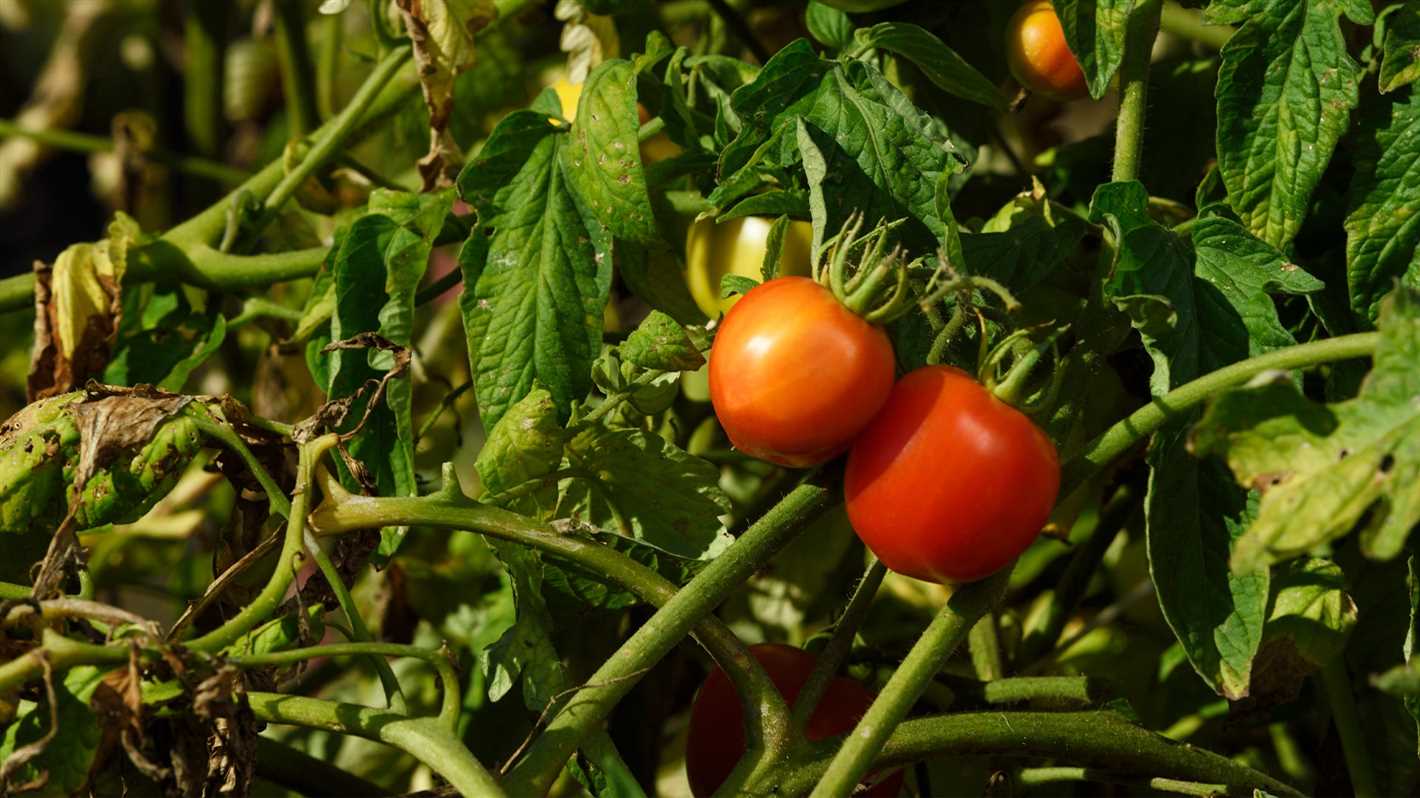
When tomato plants start to flower and develop fruit, it is important to prune with caution. Removing too many leaves at this stage can hinder the plant’s ability to produce energy through photosynthesis and limit fruit production. However, it is still beneficial to remove some of the excess foliage that blocks sunlight penetration to the lower branches and fruits.
Late Season
Towards the end of the growing season, it is common for tomato plants to become unruly with numerous branches and leaves. Pruning at this stage can help redirect energy to the remaining fruit and improve air circulation, reducing the risk of diseases and promoting overall plant health.
It is important to note that the specific timing and extent of pruning can vary depending on the tomato variety, climate, and personal preference. Regular observation and assessment of the plant’s growth and health are key to determining the appropriate timing for leaf pruning.
Early Morning or Late Evening
If you are planning to prune your tomato plants, you might be wondering when is the best time to do it. Should you do it in the early morning or in the late evening? There is no definitive answer to this question, as it depends on various factors.
Early Morning
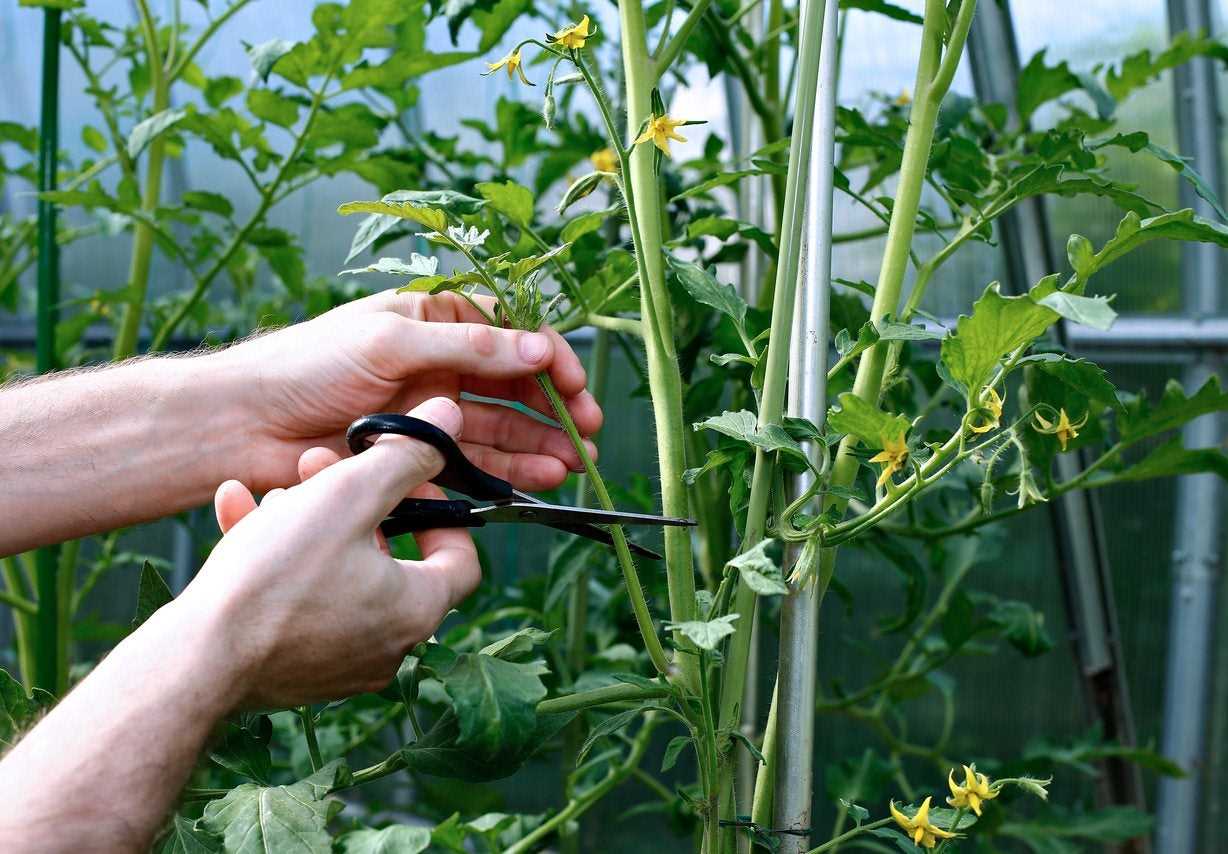
Pruning your tomato plants in the early morning has its advantages. The temperatures are usually cooler, which can be beneficial for both you and the plants. Pruning in cooler temperatures can reduce the stress on the plants and minimize the risk of wilting. Additionally, the morning dew on the leaves can help to prevent the spread of diseases.
Late Evening
On the other hand, pruning in the late evening also has its benefits. The temperatures are often lower in the evening, which means that the plants will have more time to recover from pruning before the heat of the day arrives. Additionally, pruning in the evening allows the plants to benefit from the cooler temperatures overnight, which can promote healthy growth.
Ultimately, the best time to prune your tomato plants is a matter of personal preference and convenience. Some gardeners prefer to do it in the early morning to start their day off with a gardening task, while others find it more relaxing to do it in the evening after the heat of the day has passed. Whichever time you choose, make sure to use clean and sharp pruning tools to minimize the risk of diseases.
Before Flowering Stage
Before the plants enter the flowering stage, it is important to prune tomato leaves to ensure proper growth and development. Pruning at this stage helps the plants focus their energy on producing strong stems and branches, which will ultimately support the weight of the fruits during the fruiting stage.
Here are a few key points to consider when pruning tomato leaves before the flowering stage:
- Remove any suckers: Suckers are the small shoots that grow in the leaf axils, between the stem and the main branches. By removing these suckers, you allow the plants to put more energy into producing flowers and fruits rather than leaf growth.
- Limit the number of main branches: It is important to limit the number of main branches to prevent overcrowding and ensure proper air circulation. This will help prevent the spread of diseases and promote healthier growth.
- Remove lower leaves: As the tomato plants grow, some of the lower leaves may become shaded and hinder air circulation. It is advisable to remove these lower leaves to promote better air flow and reduce the risk of disease.
By pruning tomato leaves before the flowering stage, you can help create a healthier and more productive plant. It is important to strike a balance between removing enough leaves to allow for good air flow and light penetration, while still maintaining enough foliage for photosynthesis.
| Advantages |
|---|
| Redirects energy towards fruit production |
| Improves air circulation |
| Reduces the risk of diseases |
| Promotes healthier plant growth |
How Many Tomato Leaves to Remove?
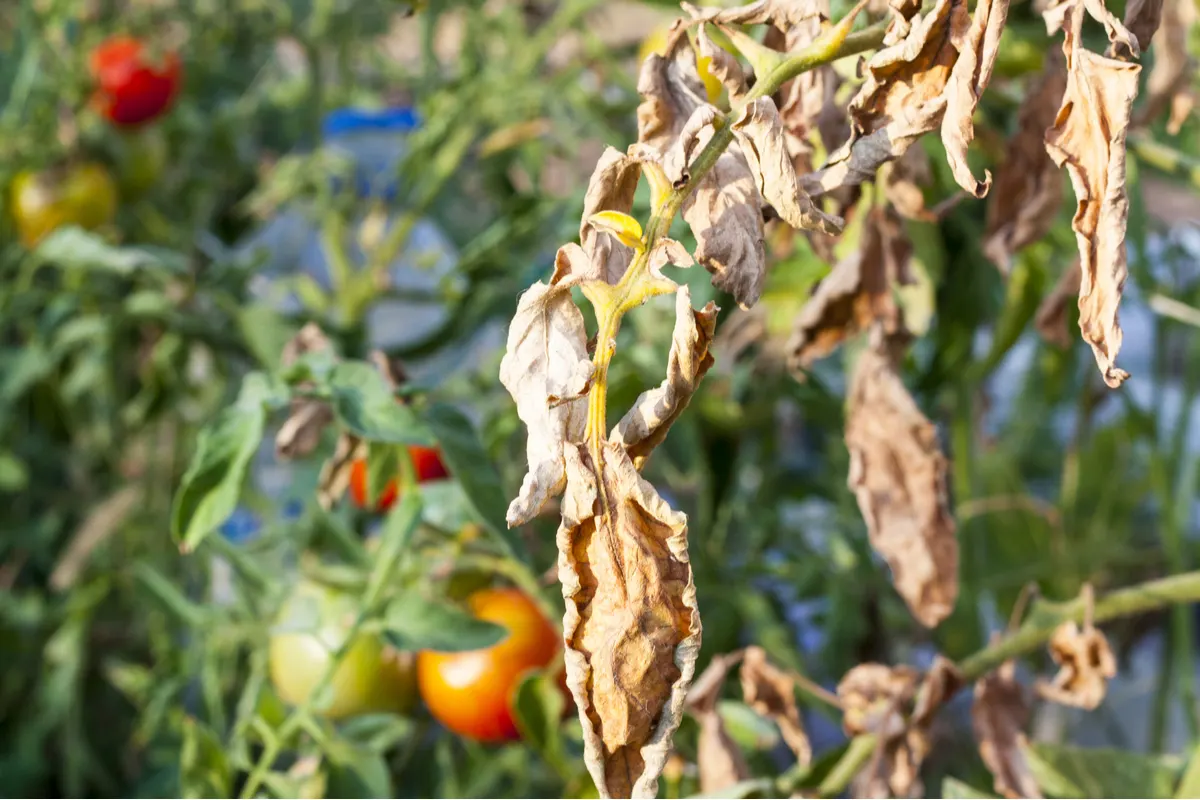
When it comes to pruning tomato plants, the number of leaves to remove can vary depending on the specific needs of your plants and growing conditions. Here are a few factors to consider when deciding how many tomato leaves to remove:
Tomato Plant Type
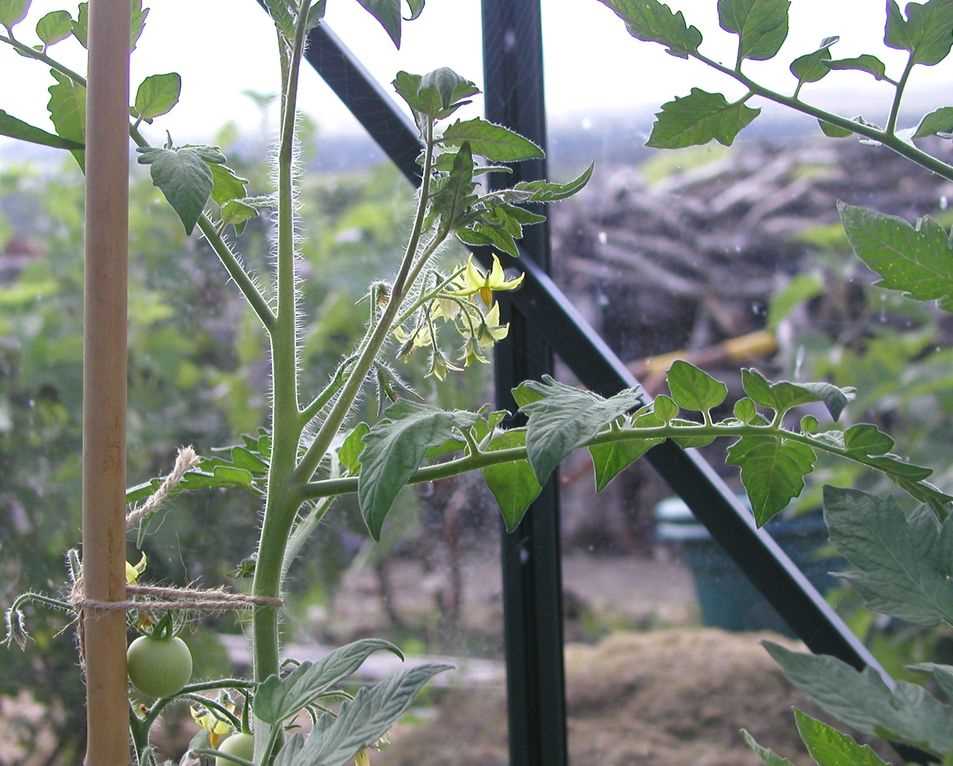
The type of tomato plant you are growing can influence the number of leaves you should remove. Determinate tomato varieties usually require less leaf removal compared to indeterminate varieties. Determinate plants naturally stop growing at a certain height and tend to have a bushier habit. Indeterminate plants, on the other hand, continue to grow and produce fruits until frost and often benefit from leaf removal to improve air circulation and promote better fruit ripening.
Plant Size and Vigor
The size and vigor of your tomato plants can also help determine how many leaves should be pruned. If your plants are growing vigorously and have a dense foliage, judiciously removing a few lower leaves can help improve air circulation and reduce the risk of diseases. Plants that are small or struggling may benefit from keeping most of their leaves to provide more energy for growth and fruit production.
Disease and Pest Pressure
If your tomato plants are experiencing disease or pest problems, removing infected or infested leaves can help prevent the spread of diseases and manage pest populations. Be sure to sanitize your tools between each cut to minimize the risk of spreading pathogens.
Fruit Ripening
Leaf removal can also influence fruit ripening. By removing some leaves, you can expose more fruits to sunlight, allowing them to ripen more easily. However, be cautious not to remove too many leaves, as the plant still needs foliage for photosynthesis and overall health.
Overall, pruning tomato leaves is a balance between maintaining the plant’s health, managing disease and pest risks, and promoting optimal fruit production and ripening. It’s recommended to start by removing the lower leaves that are touching the soil to prevent potential soil-borne diseases. From there, you can selectively remove additional leaves based on your plants’ specific needs.
Remove Excess Leaves
To ensure proper air circulation and reduce the risk of diseases, it is important to remove excess leaves from your tomato plants. Excess leaves can create an environment that is conducive to fungal growth and limit the penetration of sunlight.
When to Remove Leaves
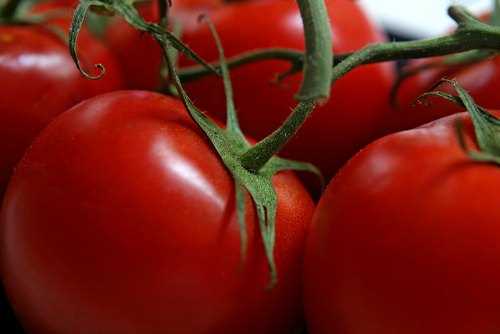
You can start removing leaves once your tomato plant has established a strong stem and has started producing fruit. It is usually recommended to start pruning around 4-6 weeks after transplanting or when your tomato plant reaches a height of about 12-18 inches.
How Many Leaves to Remove
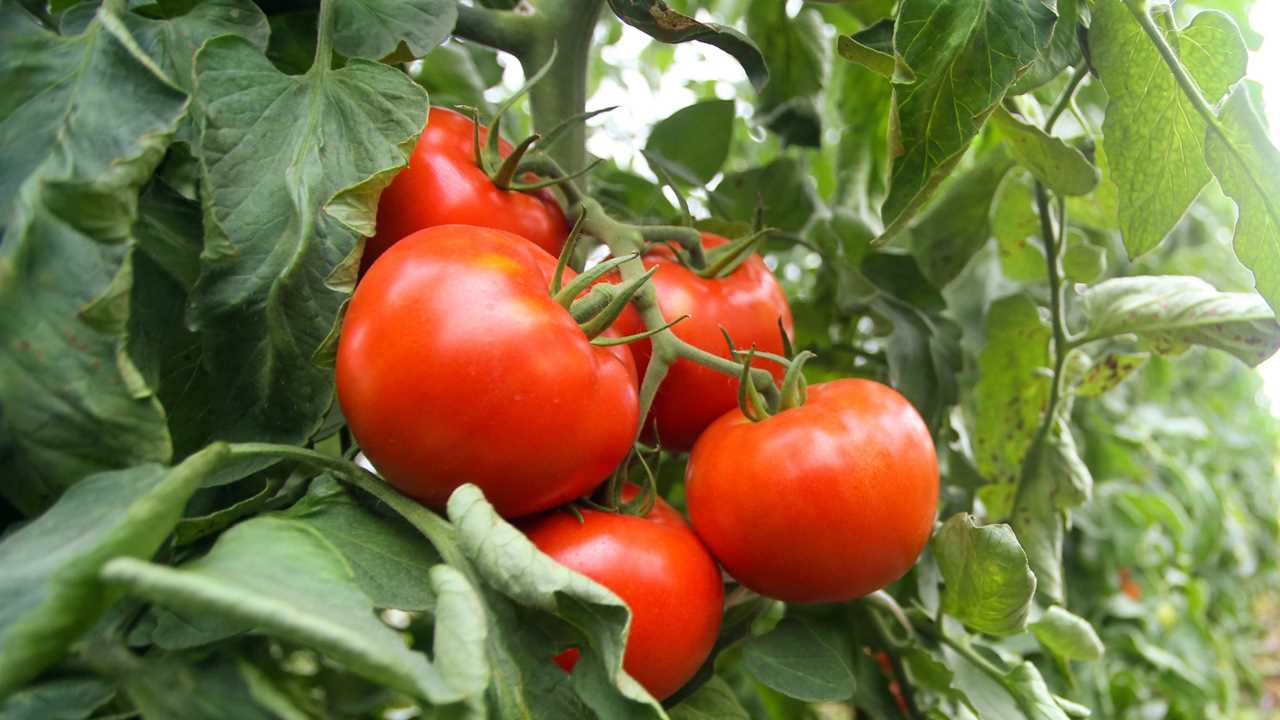
The number of leaves to remove depends on the specific variety of tomato you are growing and the overall health and vigor of your plant. As a general rule, you should aim to remove the lower leaves that are touching the ground or close to it, as these are the ones most likely to get infected with soil-borne diseases. Additionally, you may also want to remove any leaves that are shading the fruits or blocking air circulation.
When removing leaves, make sure not to remove more than 30% of the total leaves at one time, as this can shock the plant and hinder its growth. It is also important to prune selectively and leave some leaves on the plant to ensure it can still photosynthesize and produce energy.
How to Remove Leaves
To remove leaves, use a sterilized pair of pruning shears or scissors. Start by cutting off the lower leaves that are touching the ground. Hold the leaf close to the stem, making a clean cut at the base of the leaf stem. Avoid tearing the leaves or leaving stubs, as this can create entry points for diseases.
After removing the excessive leaves, it is a good practice to dispose of them outside of the garden to prevent the spread of diseases. Remember to clean your tools with alcohol or a bleach solution between cuts to prevent the transmission of diseases.
Conclusion
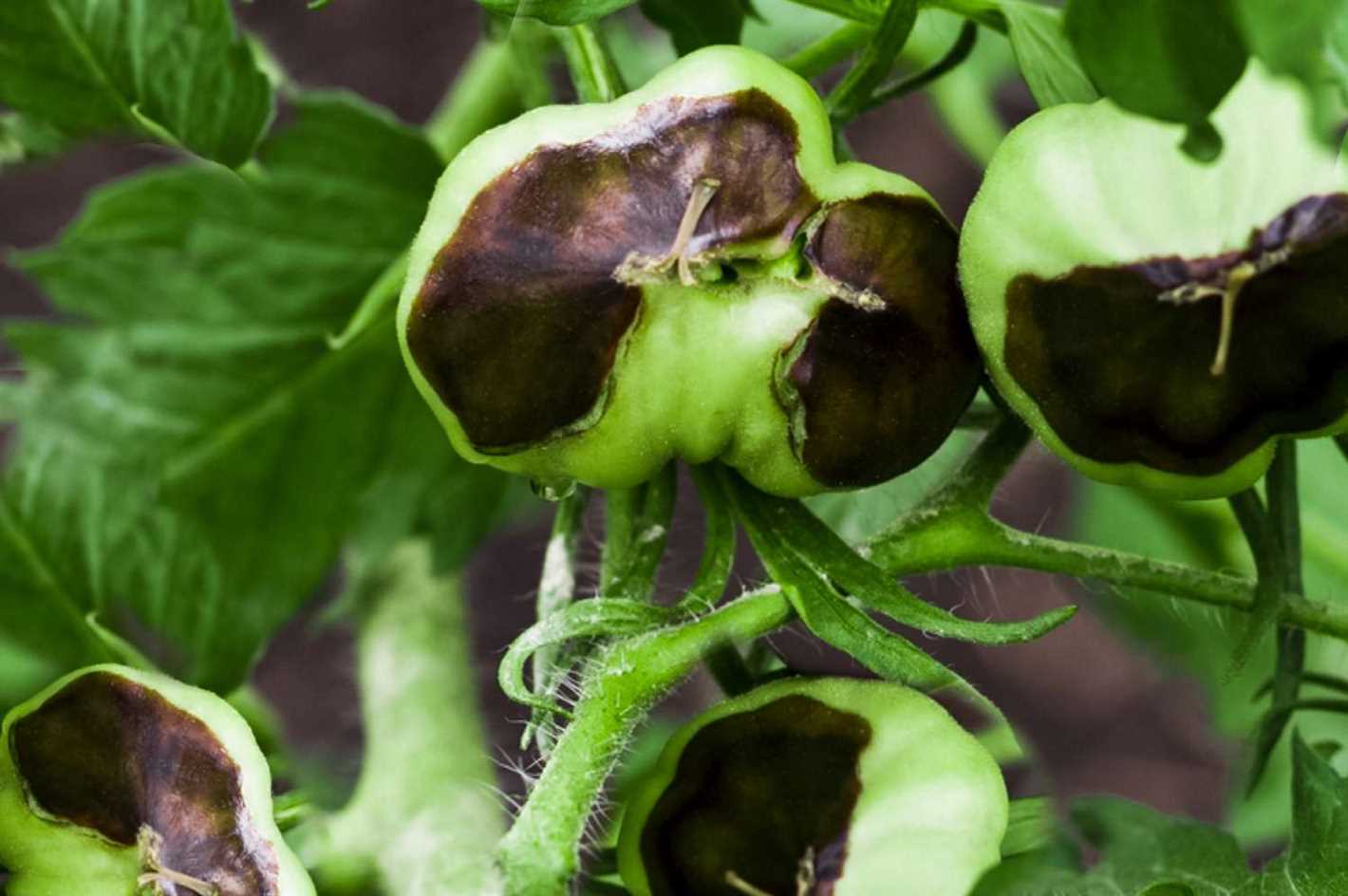
Removing excess leaves from your tomato plants is an important step in maintaining their health and productivity. By removing the right leaves at the right time, you can improve air circulation, reduce disease risk, and promote better fruit development. Just remember to prune selectively and avoid removing too many leaves at once.
Keep Some Leaves Intact
In your quest to prune tomato leaves, it’s important to remember that you should keep some leaves intact. This is because the leaves play a crucial role in the overall health and productivity of the tomato plant.
Benefits of Keeping Leaves Intact:
- Photosynthesis: Leaves are the main site for photosynthesis, the process by which plants convert sunlight into energy. By keeping some leaves intact, you ensure that the plant has enough foliage to produce energy for growth and fruit development.
- Fruit Protection: Leaves provide shading and protection to the developing fruits. They act as a barrier between the fruits and direct sunlight, which can cause sunburn or discoloration.
- Stabilizing the Plant: Leaves help to stabilize the plant by providing support and structure. They assist in distributing nutrients and water throughout the plant, ensuring proper growth and development.
- Reducing Stress: Removing too many leaves can cause stress to the plant. This stress can affect the overall health of the plant, making it more susceptible to diseases and pests.
Which Leaves to Keep:
When deciding which leaves to keep, prioritize the following:
- The topmost leaves: These leaves are exposed to the most sunlight and play a crucial role in photosynthesis.
- Healthy leaves: Keep leaves that are green, free from diseases, and show no signs of damage.
- Leaves with fruit clusters: If a leaf is supporting a fruit cluster, leave it intact to ensure the proper development of the fruits.
Overall, while pruning is an important practice for tomato plants, it’s essential to strike a balance and not over-prune. Keeping some leaves intact will help maintain the health and productivity of your tomatoes.
“Question-Answer”
Why should I prune tomato leaves?
Pruning tomato leaves helps improve air circulation and sunlight penetration, which can prevent disease and promote healthier fruit production.
When is the best time to prune tomato leaves?
The best time to prune tomato leaves is in the morning or early evening when the weather is cooler. Avoid pruning during hot, sunny periods as this can cause stress to the plants.
How many tomato leaves should I remove when pruning?
The number of tomato leaves to remove when pruning depends on the size and growth of the plant. Generally, it is recommended to remove the bottom 6-8 inches of leaves to improve air circulation and reduce the risk of soil-borne diseases.
Can pruning tomato leaves help increase fruit production?
Yes, pruning tomato leaves can help increase fruit production. By removing excess leaves, the plant can redirect its energy towards fruit development. However, it’s important not to remove too many leaves, as they provide shade and help protect fruit from sunburn.
Will pruning tomato leaves affect the taste of the tomatoes?
No, pruning tomato leaves does not directly affect the taste of the tomatoes. The taste of tomatoes is primarily influenced by the variety of the plant and the conditions in which they are grown.
Can I prune tomato leaves throughout the growing season?
Yes, you can prune tomato leaves throughout the growing season. Regular pruning can help maintain airflow and prevent the spread of diseases. However, it’s important to avoid pruning too close to the end of the season, as the remaining leaves help ripen the fruit.







